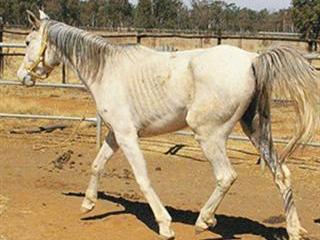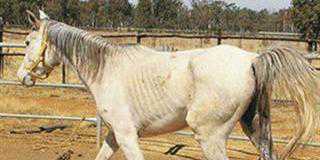The western dressage discipline began in the USA in 2007, when it was decided to combine the strengths of western riding with the classical tradition of dressage. By 2010, the Western Dressage Association of America (WDAA) had been formed, a website developed and training clinics were being set up in the USA and elsewhere.
All of this was largely thanks to the efforts of well-known horse trainers Eitan Beth-Halachmy and Jack Brainard.
Currently, only two countries outside the USA, namely Canada and Australia, are official association partners, but western dressage is now recognised as a valid discipline, and plans are underway to make South Africa an affiliate.
Why western dressage?
Western riding is associated with cowboys and cattle. Stetsons, spurs, loose reins and saddles with a pommel made to hold a roped cow, all help to form this perception. Dressage, by contrast, is associated with a horse holding its head high, arched at the poll, as well as tight reins. Riders are also dressed formally in black and white, with riding helmets, black boots and whips.
What possible connection could there be between these disciplines? The answer is the level of horsemanship shown by advanced dressage and western riders. This has been demonstrated on YouTube, where a top reining rider swops horses with a top dressage rider, and they are able to ride each other’s horses successfully.

The Arabian mare, Ilizwe My Flair, has the correct conformation and movement to perform well in western dressage.
Many western riders use classic dressage to train their horses. This dates back 50 years to Roy Rogers, who rode his horse, Trigger, like a Lippizaner, performing many haute école movements. Today Lynn Palmer uses classic dressage in her western displays. Both classic dressage (at the Spanish Riding School in Vienna) and western riding (from the Spanish vaqueros of California) date back 300 years.
Returning to these origins renews a way of schooling horses with balance, cadence and responsiveness, while retaining the lighter contact and comfort of western-style riding. Dressage concepts are also used in other disciplines such as show jumping and endurance riding. Many riders realise that a balanced, well-collected equine athlete, progressively schooled to improve flexibility and build muscles correctly, remains sound for longer, and is able to achieve more.
South Africa
Western dressage is recognised by both the SA Equestrian Federation and SA National Schools Association, so riders can gain points and rankings in both open competition and at schools’ level. It is an excellent crossover discipline for a horse schooled for jumping, dressage, or even saddle seat.
The horse and rider’s frame needs to be altered for higher levels of competition, but at the basic walk-jog level, most riders simply need to ride on a lighter rein. For those wanting to concentrate on western riding only, western dressage is an excellent way to make a young horse more flexible and obedient. Western dressage is becoming popular in a number of breeds such as Nooitgedacht, Boerperd and Arabian.
Trainers can easily use western dressage for re-schooling an older horse to a western frame. This also applies to warmbloods and thoroughbreds, previously used for dressage or show jumping.
For details on shows and clinics in South Africa, visit www.westernhorse.co.za. For rules and patterns, visit www.westerndressageassociation.org.













